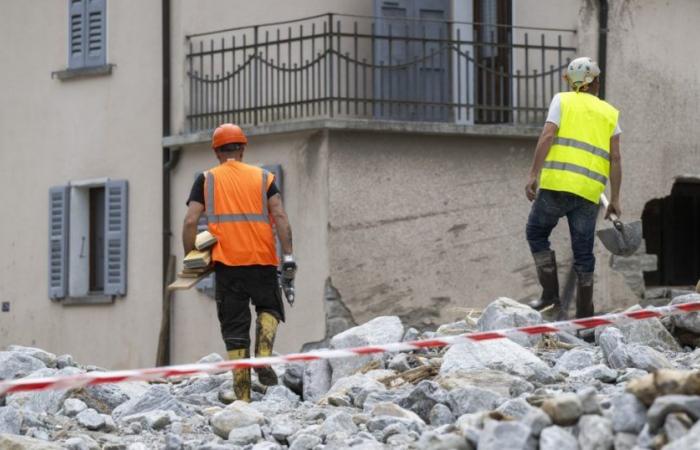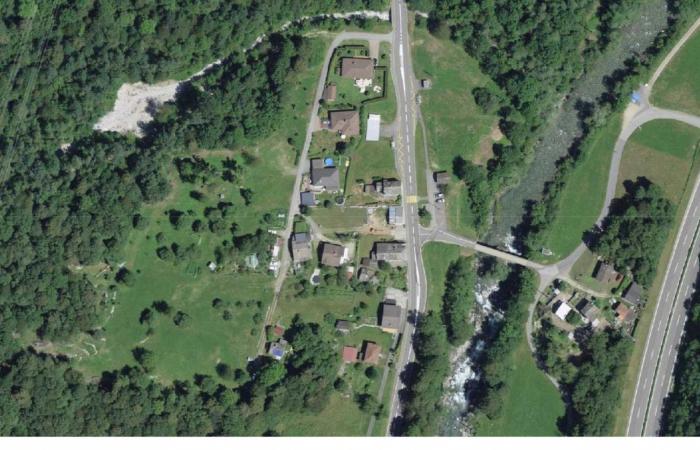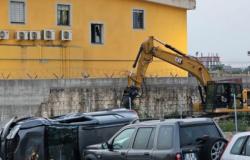In Lostallo, around 38 million francs will be needed to restore the damage caused by the storm that hit Mesolcina last Friday which caused landslides, flooding, flooding, but also two deaths, missing people and displaced people. This is “a fairly precise estimate”, Mayor Nicola Giudicetti said today during a press conference. An estimate presented by Franco Albertalli, employed in an engineering firm in the region. The mayor first of all remembered and praised the great solidarity received in recent days: ranging from the volunteers who made themselves available to try to lend a hand in this emergency situation to those who wanted to donate funds for the community. And precisely in this context he announced the opening of the ‘Bad weather damage 2024’ account dedicated to the Municipality of Lostallo – CH47 8080 8006 7767 5148 3 – which is added to the one registered to the Moesa Region – CH36 8080 8004 2212 1781 1 –. As evidence of solidarity, a spontaneous group of citizens was also formed to support the municipal authorities to carry out more bureaucratic, data collection and coordination functions. Group of which Andrea Toschini is a member: «For a municipality the size of Lostallo, these are frightening figures», he stated, recalling that the tax revenue amounts to around 1.5 million francs. “Although several damages will be compensated by insurance or covered by cantonal and federal contributions, there will certainly be exorbitant residual costs for our small community,” he added. “If the municipality were to shoulder, for example, 20% of the costs, it would be around 8 million francs, a prohibitive expense.”
Before and after
100 hectares and 8 km of road damaged
More precisely, as Albertalli explained, in Lostallo alone the flood damaged 100 hectares of surfaces, generating 290 thousand m3 of material that needs to be cleared. The banks of the Moesa River were eroded along 400 meters, while roads and their infrastructure were damaged along 8 kilometers. In Sorte, three homes were completely destroyed, but over 100 buildings were damaged. Public works such as the water purification plant, the pumping station and bus stops were also damaged. The drinking water supply line was also destroyed over a length of 600-800 meters. Last but not least, 30% of the 8 km long network of paths (currently unusable) was seriously damaged.
‘I didn’t see the landslide coming down, I only heard the noise’
And all this because of the enormous quantity of water, rocks, wood and mud that has flowed from the tributaries of the Moesa, some of which (like the one in Sorte) are dry most of the time. “You only see water when it rains or when the snow melts,” says Renzo Mazzolini, one of the thirty displaced people, met on the sidelines of the press conference. “At the moment I can’t go back to my house in Sorte, because there are no services: without water it is impossible to start cleaning and clearing out.” A house that, unlike others, “is still standing, also thanks to the reinforced concrete wall that protected it.” Mazzolini was actually in his home when the disaster struck: “I didn’t see the landslide come down; I only heard the noise. The temptation was to leave, but we couldn’t go towards Lostallo because the stream looked like a waterfall, while on the other side there was the landslide. So I stayed at home, hoping for the best. And at a certain point I heard a knock on the window: it was a friend with a bulldozer who then took me to Lostallo”. Mazzolini appears calm when he tells us about the terrifying events that happened to him. His main concern is not knowing when he will be able to return home: “At the moment I am staying with family members and I still have no idea when I will be able to return. If I knew it would take more than a month, I would look for alternatives”.







